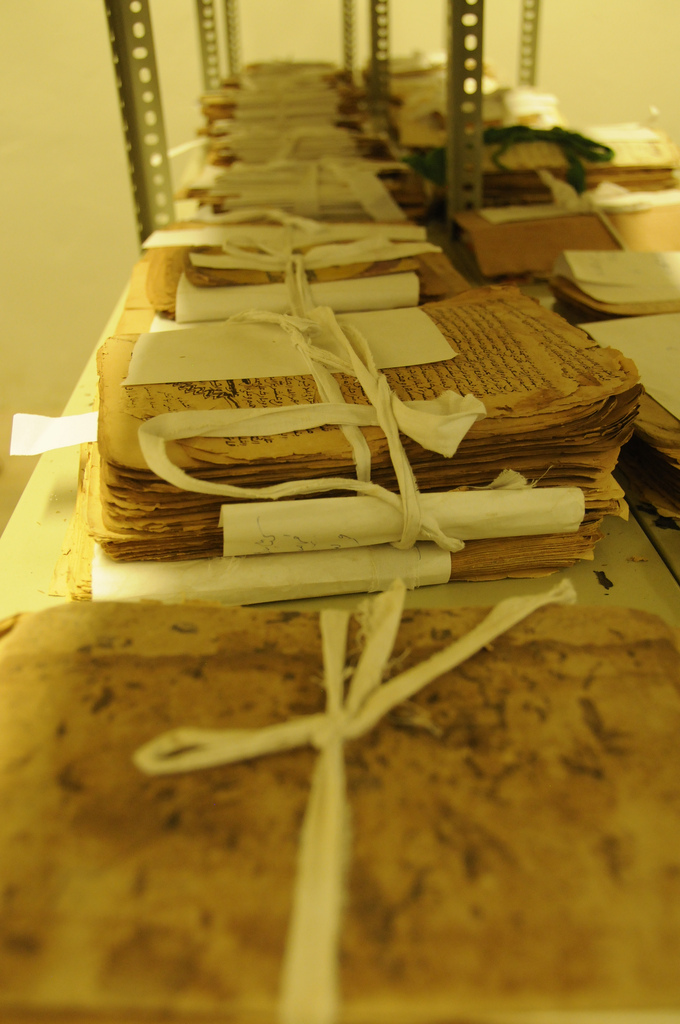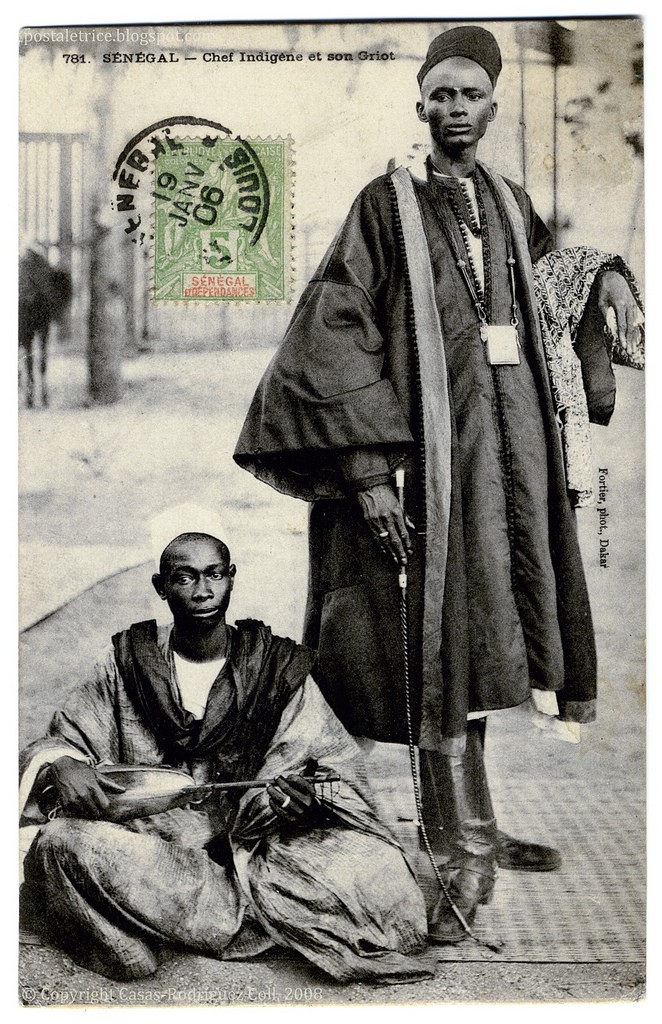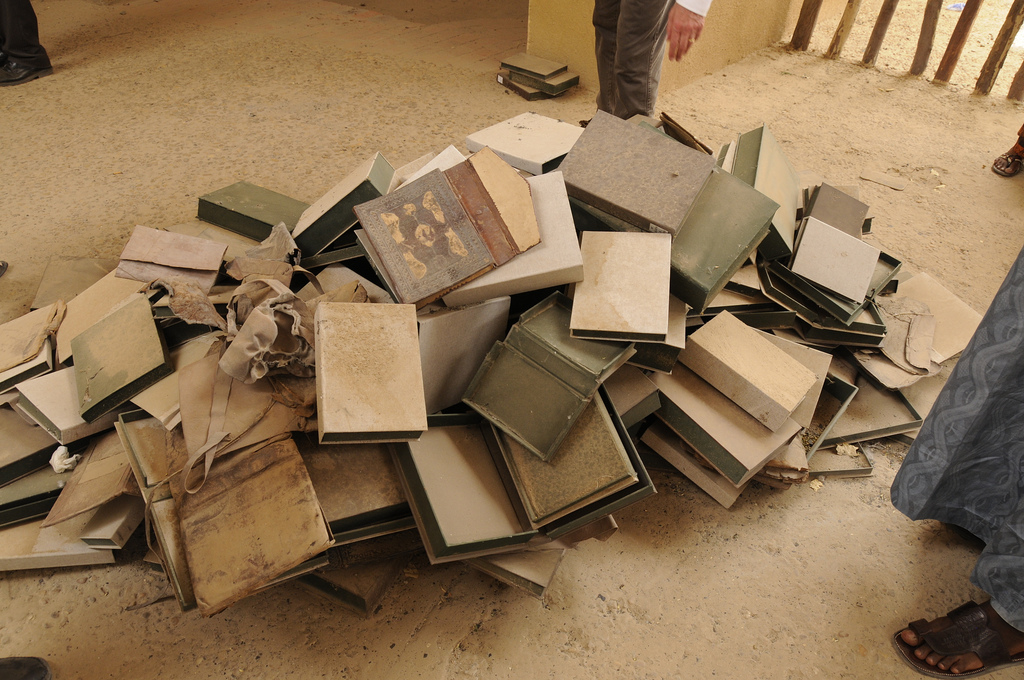“No heritage institution can afford to be an island to itself in the task of heritage preservation.” (Zaid and Abioye, 2010, p. 62)
Preservation of cultural heritage in Africa constitutes an enormous challenge to institutions there (Zaid and Abioye, 2010). The first issue is the very basic physical preservation of items already in collections. Studies have found that across the continent little attention has been paid to environmental controls and monitoring of these items (paper, wood, metal, etc.) and few studies have been made examining preservation in Africa in general (Ngulube, 2005). Yetunde Zaid and Abiola Abioye have taken a close look at the challenges to digital preservation of heritage objects in Nigeria and found that, in these equatorial conditions, the temperature and relative humidity are not only often too high, but they may fluctuate widely, a situation extremely dangerous to delicate materials.
Likewise, the study found a dearth of understanding of basic preservation techniques, and a lack of strong legal policies protecting these valuable works. This is primarily due to a lack of resources being allocated to cultural institutions, but it can also be attributed to the cultural, political, economic and legal environment in which the employees of these institutions work (Zaid and Abioye, 2010). Zaid and Abioye suggest that as a survival strategy, these institutions must look to international organizations and donor agencies for funding and implementation of improved practices. With the technology available today, allowing for catalogs to be made accessible across the globe, cultural institutions everywhere should make this level of accessibility their goal—they explain that the only way to achieve this in Nigeria is through collaborative projects. However, in the case of Nigeria, they found that collaboration for preservation (mostly of digitization programs) was not encouraged by legislation or policy by the government, which would be the essential support necessary before institutions can garner funding from global partners.
Likewise, concerning the cultural institutions in Sub-Saharan Africa, Peter Johan Lor has suggested that they are incapable of archiving current collections (due to funding) and with questionable infrastructure causing lack of access, the goal of global access to collections is insurmountable without the aid of institutions in developed countries (Kavulya, 2007). Lusenet has noted that for publically funded institutions (which many are in Africa), it is imperative that their governments recognize and support, not just the theoretical idea of cultural preservation but, the responsibilities of these institutions and the money and labor these activities require (Lusenet, 2007). However, many scholars have indicated an opposition to this strategy of cooperation because it goes against the spirit of self-sustainability that many believe is essential for these programs to be viable.
Digitization schemes have been set forth by multiple groups, most significantly the International Council of Archives and the IFLA, who in 2005 funded a study completed by the National Library of South Africa titled ‘Networking Cultural Heritage’ that examined the readiness of cultural institutions in South Africa for inclusion into collaborative digital projects. Kalusopa summarized these findings:
– that the establishment of de-centralized repositories of digital libraries through collaborative programs still had a long way to go;
– that few libraries had attained ICT levels required for adequate connectivity;
– that libraries were at different stages of digital development, with very different needs; and
– that there was a need for country-level bodies, which understand the requirements of libraries and that could drive forward digital development (2009, p. 99).
Ngulube suggests that, across the continent, because of the lack of resources for digitization, the most common solution for preservation of archival materials is and will continue to be microfilm (Ngulube, 2005, p. 151).
V.O Ekwelem, V.N. Okafor and S.C. Ukwoma of the University of Nigeria, Nsukka, sought to examine the problems confronting institutions in Nigeria in their efforts to provide access and preservation of cultural materials (Ekwelem et al, 2011). Their study combines extensive research with surveys of major libraries and archives. Through their research they conclude that “digitization contributes to the conservation and preservation of heritage and scientific resources, creates new educational opportunities, can be used to encourage tourism, and it provides ways of improving access by the citizen to their patrimony” (Ekwelem et al., 2011, p. 2). However, their surveys found that institutions across Nigeria lacked the commitment to digitization by the available human resources; and of the preservation techniques they found being actively practiced in these institutions, binding loose sheets was the most common, photocopying the second, microfilming the third—digitization was thought to be cost prohibitive.
The Timbuktu Manuscripts Project
The ancient city of Timbuktu, in Mali, has a long and rich history due to the fact that it is located at the intersection of established trade routes dating back to the Middle Ages. Over the many years since, manuscripts and other historic documents have accumulated in the city, chronicling the commerce and intersection of cultures. Forty years ago the Malian government recognized this unique heritage and began steps to preserve these documents (as many as 300,000 items) for future scholars by the Ministry of Education founding the Ahmed Baba Institute in Timbuktu (Dong, 2011).
The Ahmed Baba Institute has relied on foreign aid and bilateral agreements since its inception, particularly for the digitization of these precious documents. Norway funded the purchase of laptops, scanners, digital cameras and hard drive storage (Dong, 2011). In the 2000’s, the South African government gave $26 million dollars to build a new structure to house the Institute, which was completed in 2009 with a proper air conditioning system for preservation purposes (Dong, 2011). Unfortunately, the preservation and digitization of these items has been continually hampered: for instance, because of unpredictable electricity the Institute has often had to choose between electricity for air conditioning or for computers (Dong, 2011). As of January 2013, only 18% of the collection had been digitized and because the Institute was not capable of maintaining their own website, they can not offer virtual access to these objects, the digital surrogates exist only on CDs (Dong, 2011). While the new building from South African funds was appreciated, it was, however, delivered by Thabo Mbeki with rhetoric describing the manuscripts as owned by all of Africa, thus questioning Mali’s rights to these artifacts and angering many locals (Dong, 2011).
Not only have ongoing financial costs threatened the sustainability of the preservation and digitization of these documents, violence has also affected activities. In 2012, the mostly Islamic Touareg people in the North of the country began to fight the Malian government for autonomy of the region (Northern Mali Conflict, 2013), and in January of 2013 it was reported that the Ahmad Baba Institute was burned by these insurgents. Many manuscripts were destroyed—the extent of the destruction is still not known at this point (perhaps 3,000) but, it would have been many more had not a group of residents smuggled them to safety (Raghavan, 2013).
The secret smuggling of these manuscripts indicates just how integral they are to the indigenous population. Likewise, many scholars have pointed to these manuscripts as tangible evidence against the longstanding spurious claim that Africa has little written history or literate accomplishments. Therefore, their preservation is of utmost importance to contribute to the currently insignificant scholarly analysis and awareness of African accomplishment. And while the global collaborative efforts to preserve and digitize these works (involving UNESCO, Norway, South Africa, the Ford Foundation, etc.) are notable, the project’s sustainability has always been and will continue to be seriously in question.

Figure 10. From Ravier, Sophie/MINUSMA (2013b). Thousands of ancient manuscripts were burnt by extremists [photograph]. Mission de l’ONU au Mali. Retrieved from Flickr Commons: http://www.flickr.com/photos/minusma/9015971746/in/set-72157634067197462/
Photographic Negatives at Risk in Senegal
The invention of photography spread quickly throughout Africa in the end of the 19th century and was widely popular, though few historical and cultural studies of the continent recognize this, particularly in how photography was adopted and utilized by native Africans (Killingray and Roberts, 1989). In Senegal photography studios opened as early as 1860 and were widely popular; individuals and families often got portraits made as gifts (Bajorek, 2013). By the 1980s cameras were ubiquitous enough that many of these photography studios closed (Bajorek, 2013). In studying the history of photography in West Africa, Jennifer Bajorek discovered that many of these photographic studios had disposed of negatives, even crates of glass-plate negatives, by dumping them into the Senegal River; these have subsequently been trapped on a sandbar Bajorek calls the “submarine archive” (Bajorek, 2013, p. 66). It is important to note that many of these pictures are images of Africans by Africans, a representation of identity not commonly archived, preserved, or analyzed by modern scholars.
As a result of her studies in the area, Bajorek has become interested in the possibility of digitizing what remains of photographic collections in the region, however she finds the digitization process too difficult to implement given current conditions. One complaint being that she finds that local management of the digital archive (servers, backup systems, and the generators needed to run them) are often considered ‘infrastructure’ and are therefore not covered under many funding guidelines (Bajorek, 2013). Bajorek also mildly supports the radical de-colonial approach to this archival crisis given by Liam Buckley: Buckley proposes that the anxieties revolving around the destruction and decay of these materials is most often voiced by non-African people and that their demands for “modernization” to preserve cultural heritage should be countered by a righteous display of sovereignty: letting them rot (Bajorek, 2013).

The Disappearance of Indigenous Knowledge
In addition to the many instances of material culture being threatened with extinction in Africa (including architectural), there is the disappearance of intangible, indigenous knowledge as well. In Africa, indigenous knowledge has rarely been documented, as many of the libraries and archives across the continent have been built and maintained by colonial powers that have had little interest in native cultures (Sithole, 2007). When independence came, new governments often focused scarce financial resources on more critical issues, and cultural institutions were rarely transformed (Sithole, 2007). Very little indigenous knowledge in Africa, mostly orally transmitted, has been captured and recorded and yet it represents a very valuable database, and one that, within a generation, could be lost.
For instance, in the late 1960s and early 1970s, Harold Scheub, an historian, made several trips around southern Africa to study the oral traditions of the Xhosa, Zulu, Swati and Ndebele people (Scheub, 2007). Over the course of these trips he amassed 2, 304 hours of taped storytelling, along with copious notes, and some video, in the hopes to provide full documentation of the oral traditions of the areas. Scheub decided, in order to make these materials available to the largest number of scholars, to deposit them in the University of Wisconsin-Madison Library where they could be digitized. The Collection can be accessed through the University of Wisconsin’s Digital Collections website (http://uwdc.library.wisc.edu/collections/AfricanStudies/HaroldScheub) but it is unlikely, given the difficulty of Internet access within the areas covered in this collection, that many of those cultures represented can benefit from this digitized collection (Scheub, 2007).
